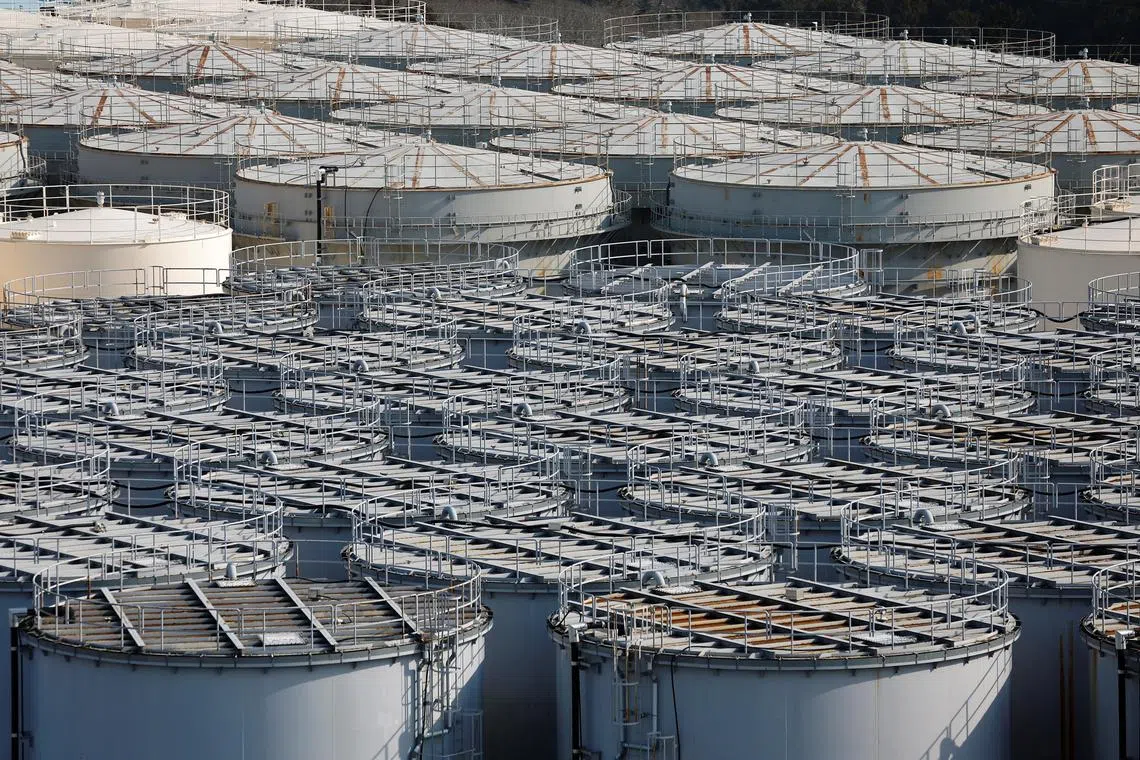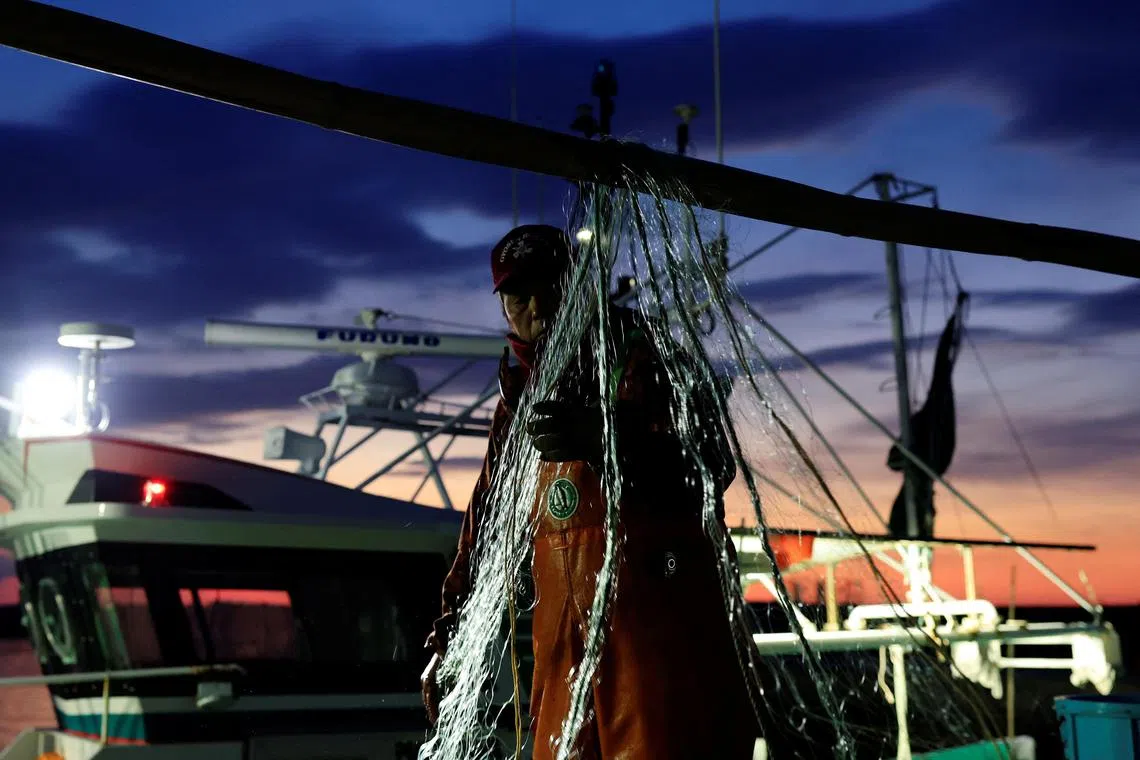Fukushima still on road to full recovery 12 years after earthquake, nuclear disaster
Sign up now: Get ST's newsletters delivered to your inbox

Tanks containing water from the disabled Fukushima Dai-ichi nuclear power plant.
PHOTO: REUTERS
Follow topic:
TOKYO – March 11 marks 12 years since the Great East Japan earthquake, tsunami and nuclear tragedy. With the region on the road to recovery, The Straits Times looks at some outstanding issues.
Water release
Japan plans to release water from the crippled Fukushima Daiichi nuclear plant into the Pacific Ocean in the coming months
This comes as the site is fast running out of space, with contaminated water being stored in as many as 1,060 water tanks on the premises. Operator Tokyo Electric Power Company (Tepco) said these tanks hinder decommissioning work.
Most of the accumulated water had been pumped into the reactor to prevent fuel debris from overheating, while some water has entered the facility as groundwater, rainwater or snowmelt, and has also become contaminated.
It will be treated before release via the advanced liquid processing system (ALPS), a filtration system that can remove all radioactive elements except the naturally occurring tritium.
Tritium, a hydrogen isotope, is a by-product of nuclear plants routinely released into oceans.
To ease lingering fears, Japan said the so-called “ALPS-treated water” will be further diluted such that the tritium concentration is less than 1,500 becquerels (Bq) per litre. This is seven times below the drinking water standard of 10,000 Bq/l set by the World Health Organisation.
After verification, the water will be pumped out via a 1km underwater tunnel at an expected rate of 90 tonnes per day.
Although the process is being overseen by the International Atomic Energy Agency, China, South Korea and some Pacific Island nations have cried foul
Local fishermen also fear reputational damage, even if their catch is tested and proven to be safe to eat. The national government has earmarked 50 billion yen (S$495.8 million) to support fisheries hurt by negative consumer sentiment.

Fisherman Haruo Ono, 71, untangles nets after returning from work at sea, at Tsurishihama fishing port in Shinchimachi, about 55 km away from the disabled Fukushima Dai-ichi nuclear power plant in Fukushima Prefecture.
PHOTO: REUTERS
Soil
At a massive interim storage facility in Fukushima, black bags upon black bags of contaminated soil are stacked up.
There is an accumulation of 14 million cubic metres of such soil so far, a figure that is set to grow given that there are still difficult-to-return zones where radiation levels are high.
By law, the soil must be moved out of Fukushima prefecture by 2045.
But the ultimate destination is not yet decided, and there does not seem to be any willing takers.
To reduce the volume, the Environment Ministry intends to start trials to reuse soil after decontamination to levels below 8,000 Bq/kg.
But even this has been problematic: A plan to use this soil at the famous Shinjuku Gyoen National Garden has been suspended, following staunch opposition.
Shinjuku resident Kunikazu Hirai, 70, told the Asahi newspaper: “We are angry at the danger of having soil that was once contaminated with radiation brought right next door to us.”
Decommissioning
Decommissioning of the crippled Fukushima Daiichi nuclear plant is only due to be completed around 2051.
Three of its six reactors suffered full meltdowns during the disaster, and Tepco has described the removal of fuel debris and spent fuel as the most difficult part of the process.
While the removal was completed in February 2021 at Unit Three, it is only scheduled to start by 2026 for Unit Two, and by 2028 for Unit One. The target is to complete fuel removal by 2031.
Extremely high levels of radioactivity have been detected at Units One and Two, and radiation-resistant scopes, robot arms and underwater robots are being developed for deployment in the next two phases of fuel debris removal.


